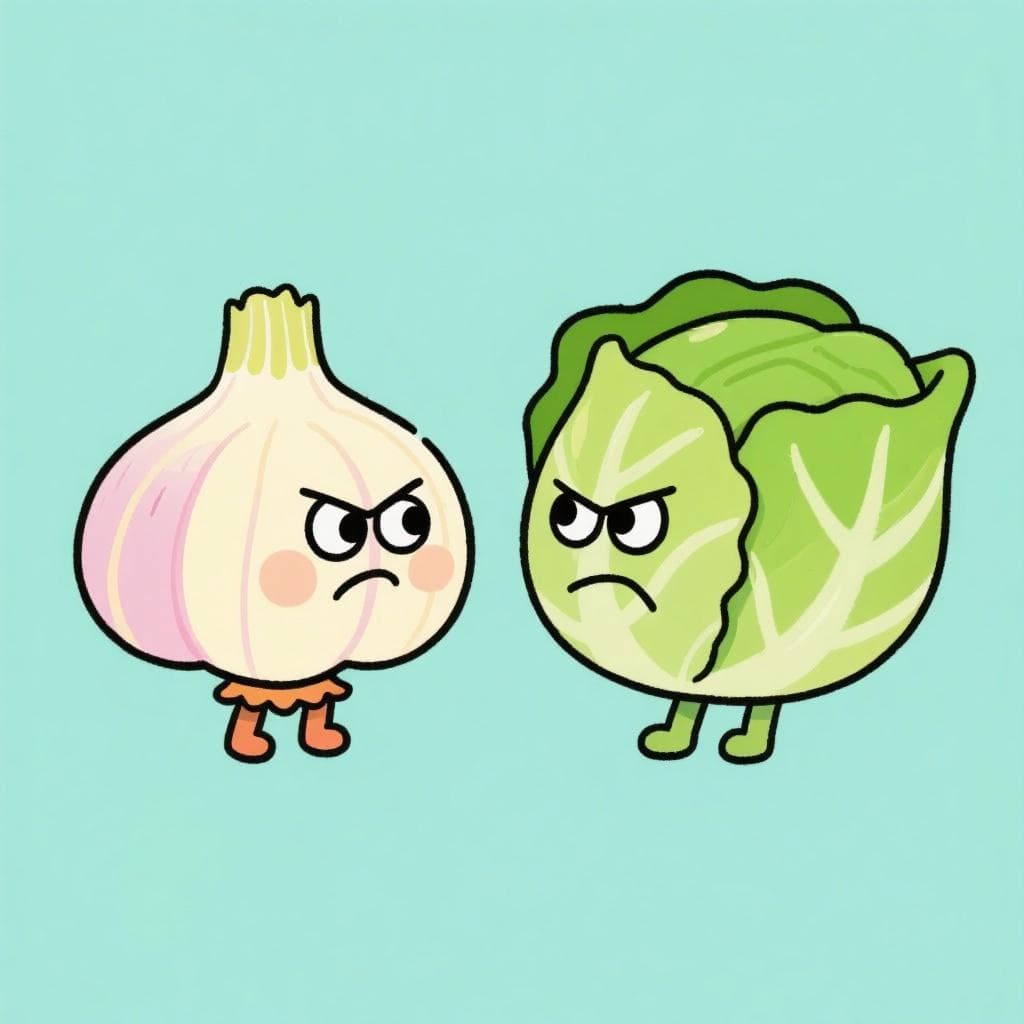El ajo picó a la col, la col picó al ajo.
el A-jo pi-CÓ a la COL, la COL pi-CÓ al A-jo
The garlic bit the cabbage, the cabbage bit the garlic.
🔊 Listen & Practice
Start with slow speed to master pronunciation, then gradually increase to challenge yourself.
🎨 Visualization

The garlic and the cabbage are in a spicy argument!
🎯 Pronunciation Focus
The Spanish 'j' Sound
/x/This is a breathy sound made at the back of your throat, like a strong English 'h' in 'hello' or the 'ch' in the Scottish word 'loch'.
The Crisp 'c' Sound
/k/Before an 'o' (as in 'col' and 'picó'), the 'c' makes a hard 'k' sound. Focus on making it sharp and clear.
Linking Vowels (Synalepha)
Practice linking the 'o' at the end of 'picó' with the 'a' in 'al' to create a smooth, single sound: 'pi-cóal'. This is key to sounding natural.
📝 Practice Breakdown
Start here. Focus on the 'j' in 'ajo'. It's a breathy sound from the back of your throat. Keep the 'c' in 'picó' and 'col' crisp like a 'k'.
Now, say the second half. The main challenge is linking 'picó' and 'al' smoothly into one sound: 'picó-al'. Don't pause between them!
Key Words in This Tongue Twister:
📚 Background
This is a classic, short tongue twister that's perfect for beginners. Its simple, symmetrical structure makes it easy to remember, allowing you to focus purely on getting the key sounds right.
❌ Common Pitfalls
Pronouncing 'ajo' like 'a-joe'
Mistake: "Using the English 'j' sound (as in 'jungle') for the Spanish letter 'j'."
Correction: The Spanish 'j' is a throaty, airy sound. Imagine you are trying to fog up a window with your breath, but add a little scratchiness to it. It's made in the back of your throat, never with the front of your tongue.
Pausing Between 'picó' and 'al'
Mistake: "Saying 'pi-có... al... a-jo' with distinct pauses between the words."
Correction: A key to Spanish fluency is linking vowels. When a word ends in a vowel and the next begins with one, they often blend together. Try to say 'picó al ajo' as if it were one long word: 'picóalajo'. This will make your speech sound much more natural and smooth.
🌎 Where It's Used
General Spanish
This is a simple and universally known tongue twister, used across the Spanish-speaking world for basic pronunciation practice.
🔗 Related Tongue Twisters
The Garlic vs. Cabbage Showdown
Try saying it back and forth, starting slowly and getting faster each time. Can you say it five times in a row without the garlic or the cabbage getting mixed up?
🏷️ Tags
Frequently Asked Questions
Why is it 'al ajo' and not 'a el ajo'?
Great question! In Spanish, when the preposition 'a' (to/at) is followed by the masculine article 'el' (the), they always merge to form the contraction 'al'. This is a mandatory rule, so you will never see 'a el' written or said.
What does 'picar' really mean here?
'Picar' is a very useful verb! It can mean 'to chop', 'to sting' (like a bee), or 'to be spicy'. In this playful context, the tongue twister imagines the garlic and cabbage are 'biting' or 'stinging' each other, a fun reference to their sharp flavors.